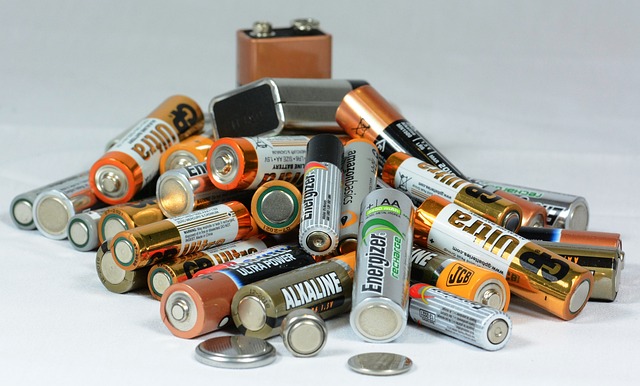Are lithium batteries considered hazmat?
Dec 17, 2019 Pageview:1925
Lithium based batteries are the most common battery chemistry in the world today. They come with the best features, including high capacity, high voltage, low maintenance and affordability. These features have made the market to swell with new improvements targeting better performance.
Lithium-ion has been seen as the hot cake of this industry. They are found in most household devices, including laptops, Smartphones, digital cameras and other devices. There capacity and power has taken the world by storm making them an asset in devices with high-power needs.
But chemistry; Lithium Polymer, seems to be taking over this popularity. They come in different sizes, offering better capacity and power. Apart from that, latest development of lithium batteries has focused on safety. This means LiPos may be safer that Li-ion batteries.
With the emergency of more needs for battery power in E-bikes and EVs, we are going to see better technologies coming up in the industry. They are saving the world by reducing emissions, with a focus on green energy.
Despite these benefits, we cannot overlook the fact that lithium batteries present a threat to users and the environment. This is perhaps one of their major disadvantages. You need to understand the risks you are facing before buying, and or using lithium based batteries. We are going to look at this factor in detail. The next sections dig deeper into this issue.
Is lithium battery hazardous material?
Lithium is one of the most powerful metals. It is small, silvery metal used in many industrial components. Its application varies from heat resistant glasses to lithium batteries.
There are different types of lithium batteries, including:
Primary ones/disposable ones. These are spherical lithium batteries found in computers, watches, PDAs, calculators and other devices.
Lithium-ion batteries. These are larger batteries in your laptops and you phone. They function in such a manner that allows lithium ions to swap electrode positions achieving charging and discharging states.
Lithium Polymer batteries. These are the latest lithium-based batteries. They are more powerful that lithium-ion and last even longer.
Lithium is lightweight; a feature that makes them work best for batteries. However, the metal is potentially dangerous.
There have been tales about laptop batteries exploding. Such accidents have caused house to burn to the ground and in some situations bringing down aircrafts. The explosions are not to be taken lightly, especially in a home environment.
At one time, there were mass recalls where tens of millions of batteries returned to manufacturers. The US government called for a need to have regulations carrying or using lithium based batteries on passenger planes. This move was highly supported by pilot unions who feared they would easily overheat and catch fire.
Lithium is not very tolerant to heat. Overheating can cause serious damages inside leading to potential hazards. And that is why the batteries are considered not safe for transport with passengers and other goods.
They are both chemical and electrical hazards. The dangers they pose include chemical burn, fire and electrical shocks. If not well packaged, the batteries can be real trouble. Many of the lithium batteries on the market today have flammable electrolyte. They are also denser, and if they ignite, putting them off is not easy.
What materials are considered hazmat?
Hazardous material/ hazmat are any item which can cause harm to humans, animals, the environment or itself. These can also include agents like biological, chemical, radiological, or physical. They can cause serious damage if they interact with other factors. There are professionals mandated with properly managing such materials.
Management bodies are responsible for advising other managers on what to do with the materials at certain point of their life-cycle. They also process planning and development of products with such materials.
In USA, hazardous materials are defined and managed by primary laws and regulations. The Environment Protection Agency (EPA), the U.S Occupational Safety and Health Administration (OSHA), the US Department of Transport (DOT), and the Nuclear Regulatory Commission are responsible for handling hazmat. Each of these bodies defines hazmat in their own terms.
According to OSHA, any substance or chemical that can cause a heath or physical hazard is included. Example are; carcinogenic materials, irritants, corrosives and sensitizers. They also include hematopoietic agents, combustible/explosive/flammable materials and fumes.
EPA adds to this definition, items that can cause harm to living things if released as spills, leakages, pumping, pouring, emitting, emptying, discharging and other similar methods into the environment.
DOT on the other hand, views hazmat as items or chemicals that cause risk to the public or environment when transported or moved in commerce. The body has regulated such materials under its Pipeline and Hazardous Material Safety Administration regulation. In essence, the list carries materials under 49 CFR 179-180, in the Hazardous Material Regulations.
It is important that these materials are regulated. The NRC reveals that these materials produce ionizing radiation. In other words, they can generate alpha particles, beta, gamma rays and other toxic stuff.
Lithium batteries are classified among hazardous material because of the vulnerability to explosions and potential to catch fire. Knowing such information should keep you out of trouble.
How do you ship lithium batteries properly?
There are two major types of lithium batteries that bring issues:
Lithium ion batteries
These are rechargeable batteries, also known as secondary cells. They include Lithium Polymer as well. The rules are:
The cells must not exceed 20 Watt-Hours
The batteries must not exceed 100 Watt-hours
Shipping larger batteries follow the same rules.
Lithium metal
The cells should not contain over 1.0g lithium metal
Not more than 2.0 lithium metal in the battery.
Packaging
Ensure the batteries are packaged in a circuit protection bag. Consider using the original packaging of the batteries.
The packages should rugged. This helps keep them from being crushed. International regulations require a package that can dropped.
The package should contain a specific number of batteries. It should not be packaged with other items.
If you have smaller lithium batteries, you are advised to carry them inside the devices. If not, package them in their original bag and keep them with you.
Generally, lithium batteries should not be carried on passenger planes. Most importantly, you need to use a sticker that indicates a hazardous material.
- Prev Article: Dead Lithium Battery Fix-methods and protection
- Next Article: Calculate Watt-Hours Lithium Battery
Leave Message
Hottest Categories
-
Hottest Industry News
-
Latest Industry News












